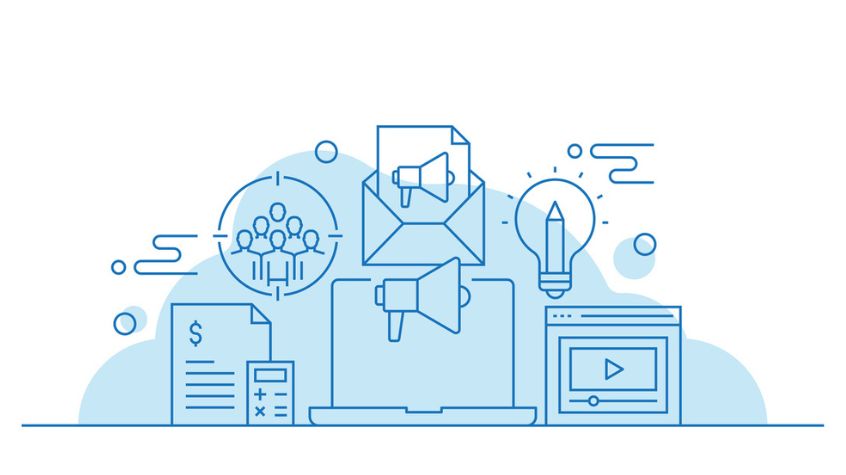Print marketing is often seen as a traditional channel, but its role in modern campaigns is stronger than ever. By connecting print pieces with digital calls to action, businesses can increase website visits, drive qualified leads, and raise online conversions. Studies show that direct mail has a response rate up to 9%, which outperforms many digital-only efforts. This shows that physical materials can prompt meaningful engagement with digital platforms. Read on to learn how to use print marketing to increase website traffic and, ultimately, conversions.
The Power of Direct Mail Conversion Rates
Direct mail has remained a reliable driver of action for decades. A recent report found the average direct mail conversion rate is significantly higher than email alone, making it one of the most dependable tools for generating results. Recipients often take the next step by scanning a QR code, visiting a personalized URL, or searching for a company’s website. By linking the printed piece directly to an online action, businesses give audiences a clear and easy path to conversion.
How Print Marketing Supports Digital Marketing
One of the strongest benefits of print is how it supports online engagement. Many companies are learning that to get measurable results, they need to integrate print and digital marketing into a unified campaign. For example, a postcard can direct recipients to a landing page with a promotional offer, while a brochure can feature a QR code that launches an email sign-up form. Print creates the first impression, and digital channels close the loop by capturing leads or driving sales.
Multichannel Marketing Solutions That Work Together
Modern buyers expect to interact with brands across different platforms. Multichannel marketing solutions meet that expectation by combining the impact of print with the speed of digital communication. A well-designed print piece might encourage a consumer to visit social media, explore a company website, or enter a contest online. This cross-channel approach creates consistent brand experiences and increases the likelihood that prospects will convert. Companies that use three or more channels in their campaigns see engagement rates jump by over 250%, highlighting the importance of integrated strategies.
Integrated Marketing Solutions with Smarter Tools
Technology has made print more intelligent than ever. Services like IQ Mail allow businesses to track responses, automate follow-ups, and combine data from both print and digital touchpoints. These integrated marketing solutions give marketers the ability to personalize messages, monitor engagement, and adjust campaigns in real time. With the right tools, print becomes measurable and works seamlessly alongside digital tactics.
Print Marketing for Lead Generation
Printed materials are a proven way to create qualified leads. Studies show that 70% of people are more likely to remember a brand after receiving a piece of direct mail compared to an online ad. This makes print marketing for lead generation especially effective. By designing brochures, catalogs, or postcards with strong calls to action, companies guide prospects into digital funnels where they can capture emails, phone numbers, or purchases.
Print Marketing ROI and Long-Term Value
One of the main concerns of executives is the return on investment. Print continues to deliver strong results in this area. Campaigns that integrate print and digital often achieve a higher ROI than single-channel campaigns. According to research, businesses see an average return of $12 for every $1 spent on direct mail. This makes print marketing ROI a persuasive reason for adding it to today’s advertising mix. It’s not only about short-term results but also about building lasting customer relationships.
How Print Marketing Completes Your Digital Strategy

To truly maximize campaign performance, brands should integrate print and digital marketing. A well-timed postcard can drive online traffic for a seasonal promotion, while a catalog can send buyers to a website for exclusive discounts. This approach supports digital marketing goals while creating more touchpoints that encourage repeat engagement. Companies that balance print with digital channels often outperform competitors who rely on one medium alone. It’s important to understand why balancing print and digital Advertising is essential in the modern market.
Examples of Multichannel Integration
Here are some ways companies are using print to drive digital success:
- Direct mail postcards with QR codes linking to product pages
- Event invitations that connect to online registration forms
- Catalogs featuring personalized URLs for exclusive offers
- Flyers that highlight social media hashtags and profiles
These strategies show how a simple print campaign can increase digital engagement while giving customers a more complete brand experience.
Why PDC Graphics is a Trusted Partner
Choosing the right partner is key for building effective campaigns. With a strong portfolio of successful client projects, PDC Graphics has helped businesses across industries create powerful multichannel campaigns that deliver measurable results. By combining smart design with advanced print technology, PDC Graphics makes it possible to connect offline and online experiences in ways that improve conversion rates and strengthen customer loyalty.
Print as a Driver of Digital Growth
So, can print marketing increase website traffic and online conversions? The answer is clear. By linking print to digital campaigns, brands open up more opportunities to capture leads, increase sales, and improve long-term ROI. Print provides a tangible touchpoint that sparks action and drives audiences online, where conversions happen.
Businesses looking to integrate print and digital strategies often choose PDC Graphics for their proven ability to deliver campaigns that drive measurable results. Contact Us Today to learn how PDC Graphics can design an integrated strategy that blends print and digital marketing into a powerful driver of business growth.


